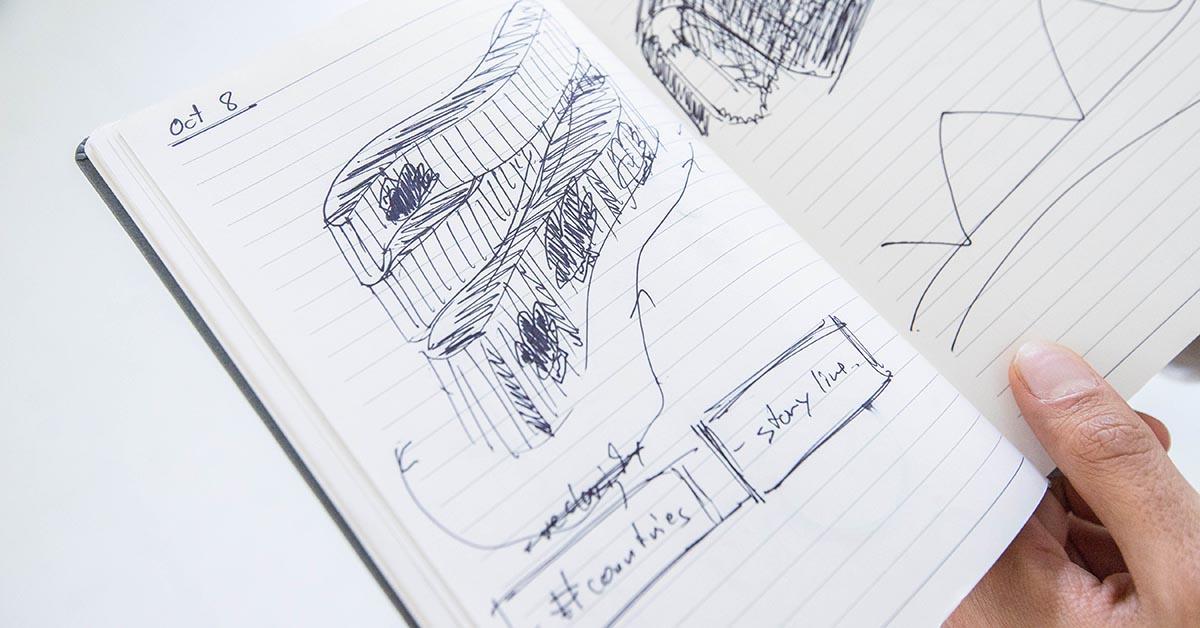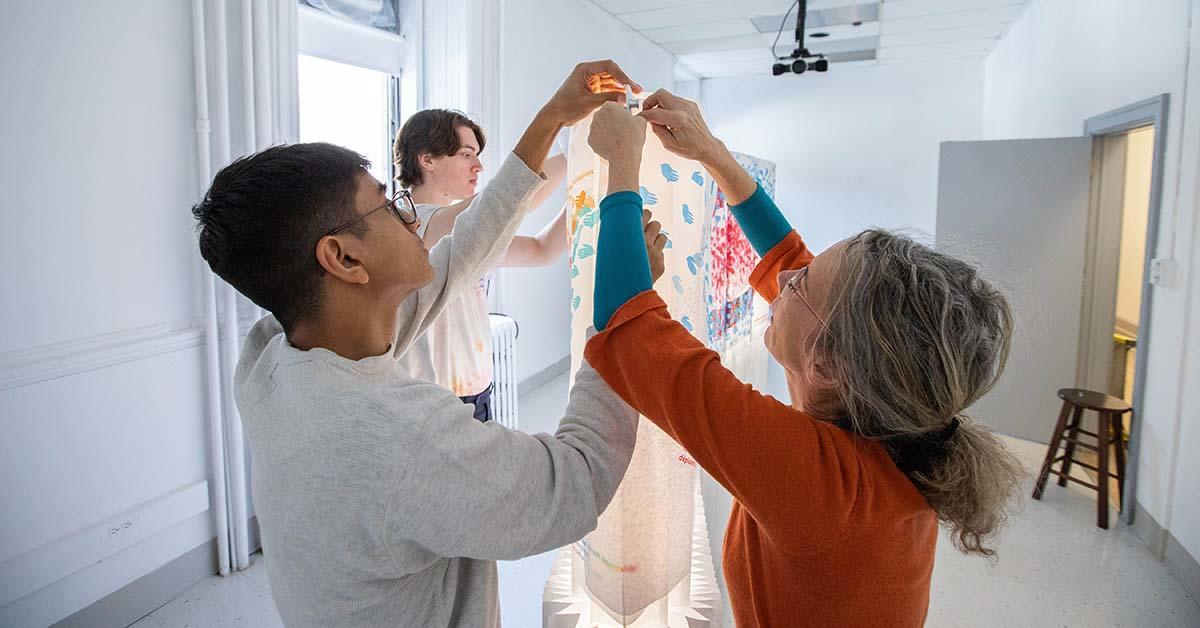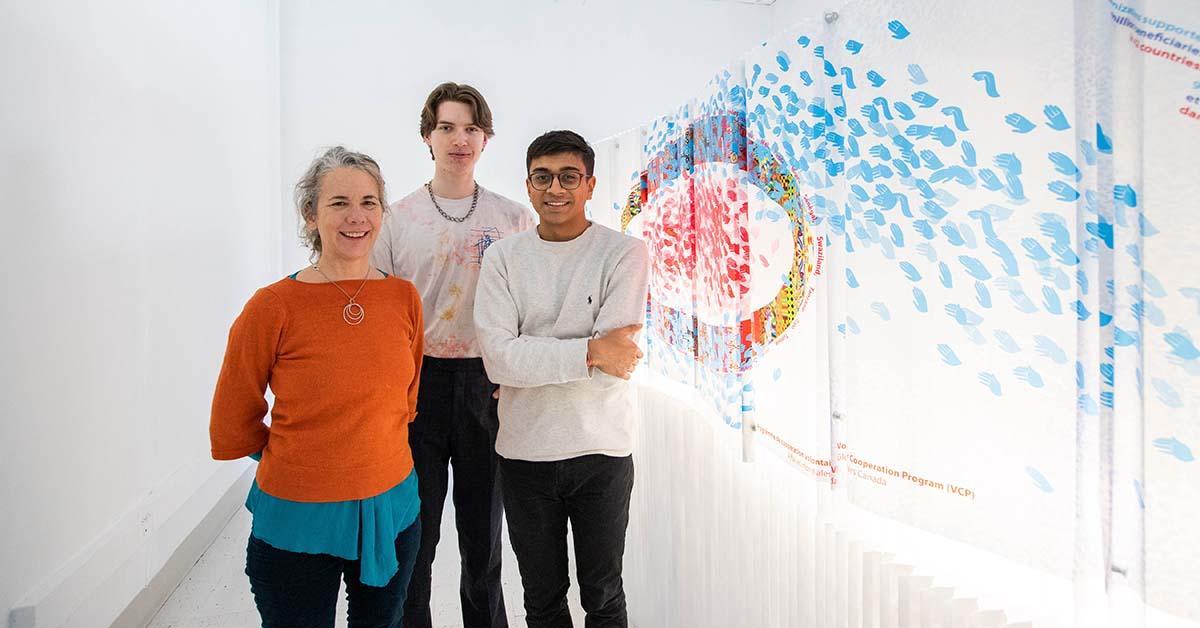
Data is massively collected, analyzed and shared to gain knowledge, disseminate information and make informed decisions. In an era of open data, we have access to an even greater amount of information. How can organizations spread these numbers in fresh, creative and human ways?
Global Affairs Canada (GAC) is exploring this question through a pilot project called The Data Informed Initiative which challenges student-artists to tell a visual story about GAC’s global impact using the medium or media of their choice. The initiative – the first of its kind in government – aims to foster innovation by creating dialogue between academia, student artists, and GAC program experts.
“The project is really about building excitement around data culture and exploring new ways of sharing the work we do”, expressed Robert Hawara, acting director of the Data and Analytics Program and lead for The Data Informed Initiative at GAC. “There are many studies that show that people retain information much more quickly when there is an appeal to our human side: to emotions, to beauty, to the human experience. This is exactly the bridge that we’re exploring with this initiative: the fact-based, data-driven, rational approach with one that’s more artistic, more beautiful, and more inspirational.”
At uOttawa, this project brought together a diversity of minds. Jennifer Macklem, Associate Professor in the Department of Visual Arts, Willem Deisinger, Honours BA in Philosophy and Fine Arts student, and Devansh Shah, BASc in Mechanical Engineering student have spent a year working on their project.
Their final piece is a physical visualization that reflects three of GAC’s programs: the Volunteer Cooperation Program, the International Youth Internship Program and the International Aboriginal Youth Internships initiative.
Their work was presented as part of International Development Week and will travel across Canada. We met with the team to learn about this unique collaboration.

Devansh and Willem, you both have very different fields of study; when did you become interested in visual arts?
Devansh Shah (DS): My interest in arts started a few years ago when I was working in an industrial design studio. That's where I first got exposed to the marriage between engineering and arts in a functional way. Then I worked with a team of artists on an interactive art piece in the STEM building. I was responsible for the engineering components, but I got exposed to the way artists work and their vision of the world. That's also where I met Jennifer.
Willem Deisinger (WD): I started my studies in engineering – where Devansh and I became friends – but then I went exploring other disciplines and found my way to philosophy. I did some fine arts in high school and kept practising graphic design, so a year ago I selected my first art class to try it out and kind of push myself. It was Jennifer's class.
Jennifer Macklem (JM): We challenge the stereotypes and show that engineers can be artistic, and artists can think like engineers. The University is a great place to break silos.
How did you happen to work together on the GAC project?
WD: It's actually a funny story! I was working in the woodshop on one of my finals for Jennifer's class, and at the same time also working on a small project with Devansh. Jennifer came in to check on how I was doing on my project and that's when we realized that we all knew each other.
JM: Then I remember saying how cool that would be if all three of us could work together on a project. It almost seemed like a dream.
WD: And about a week later, you received the email from Global Affairs Canada looking for artists for the Data Informed Initiative.
That's how the « sculpture squad » started working together!

What where your inspirations?
JM: GAC provided us with three different data sets that describe their international outreach programs. The idea was to highlight the number of countries they go to, the amount of people involved in their programs, as well as the support they provide internationally and locally.
We got inspired by the multiplicity of countries involved in the program. We found textiles and fabrics from each country and compiled them together to suggest the idea of the globe. Textiles are a creative expression of cultural identity. We then came up with the icon of the hand to represent a gesture of connection, support, communication, and assistance. Different colours of hands correspond to different sets of data.
Visual art doesn't naturally come to mind as a way of presenting data, why do you think it works so well?
JM: Tables of data are distant from emotions. It seems very abstract – so is visual arts, but colours and imagery make richer associations, and it provokes a narrative. It's a more holistic experience.
DS: For example, when you see 5 million, you understand it's a big number, but you don't really have a connection to what it means. When you look at the art piece and you see the idea of 5 million hands illustrated all around the print, and see it in relation to other numbers, then you get a better sense of the scale. It's more relatable.
What where the most challenging and rewarding parts of the project?
DS: The artwork will travel, so transportation was a big constraint to work around. We had to come with a design that can easily be transported on a plane, as well as disassembled and installed by a limited amount of people. We finally came up with the textile softblocks, they can fold into the size of a book and then stretch to 14 feet, which is amazing.
JM: It can also be destabilizing. There was a lot of trial and error. But it's very gratifying to do it as a group. You get to bounce ideas out of each other, you share the process and the risk.
WD: The whole process was rewarding. Coming up with ideas as a group, reflecting on them to get a new perspective, and always moving forward. Figuring out together what would work best with the constraints and exploring new thoughts and approaches. I loved the process of multiple iterations and always pushing it forward.
JM: It was truly awesome working together with these young brilliant minds and collaborating with GAC; they have wonderful projects and I really believe in their humanitarian values.
All three artists expressed how grateful they are to have had this opportunity to work with Global Affairs Canada on this project.
